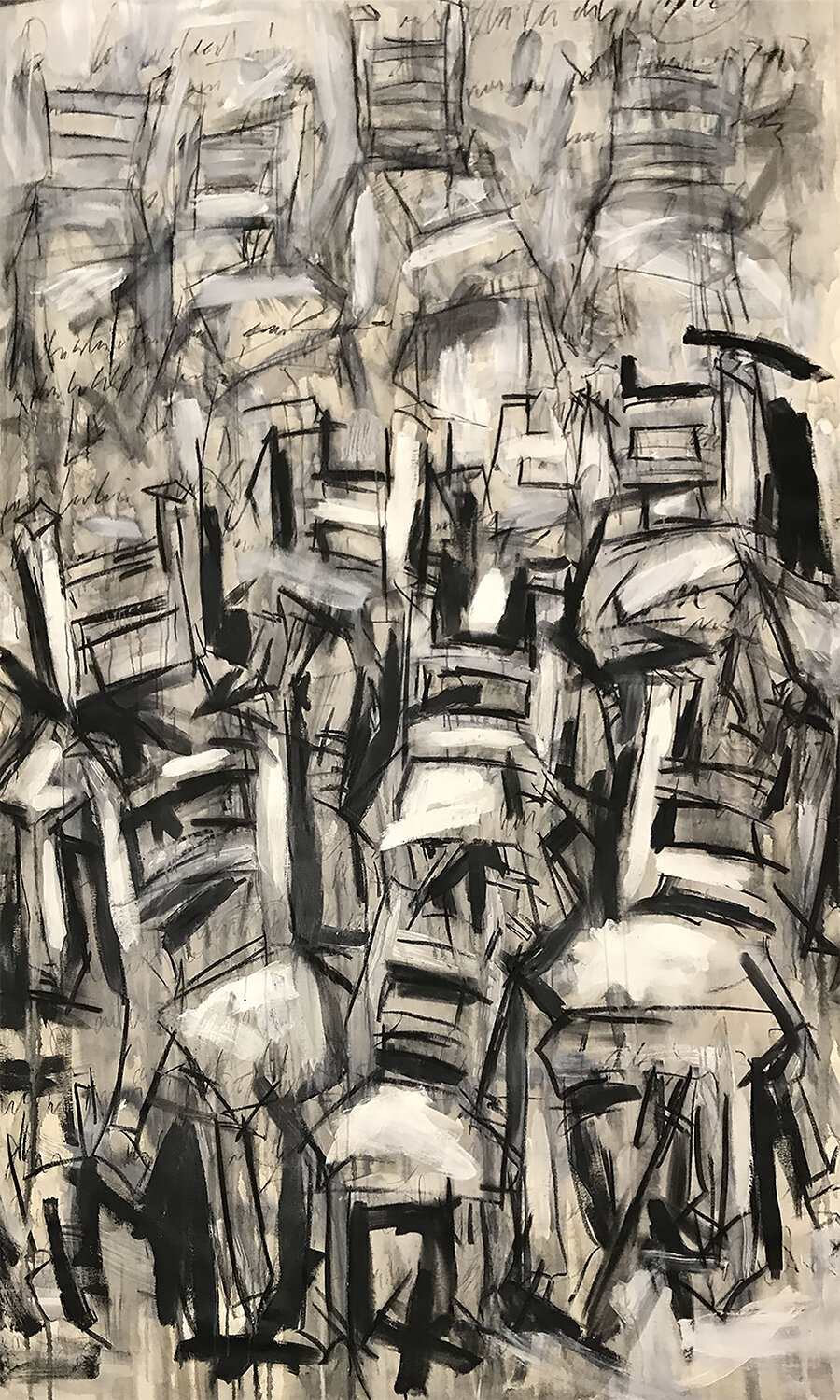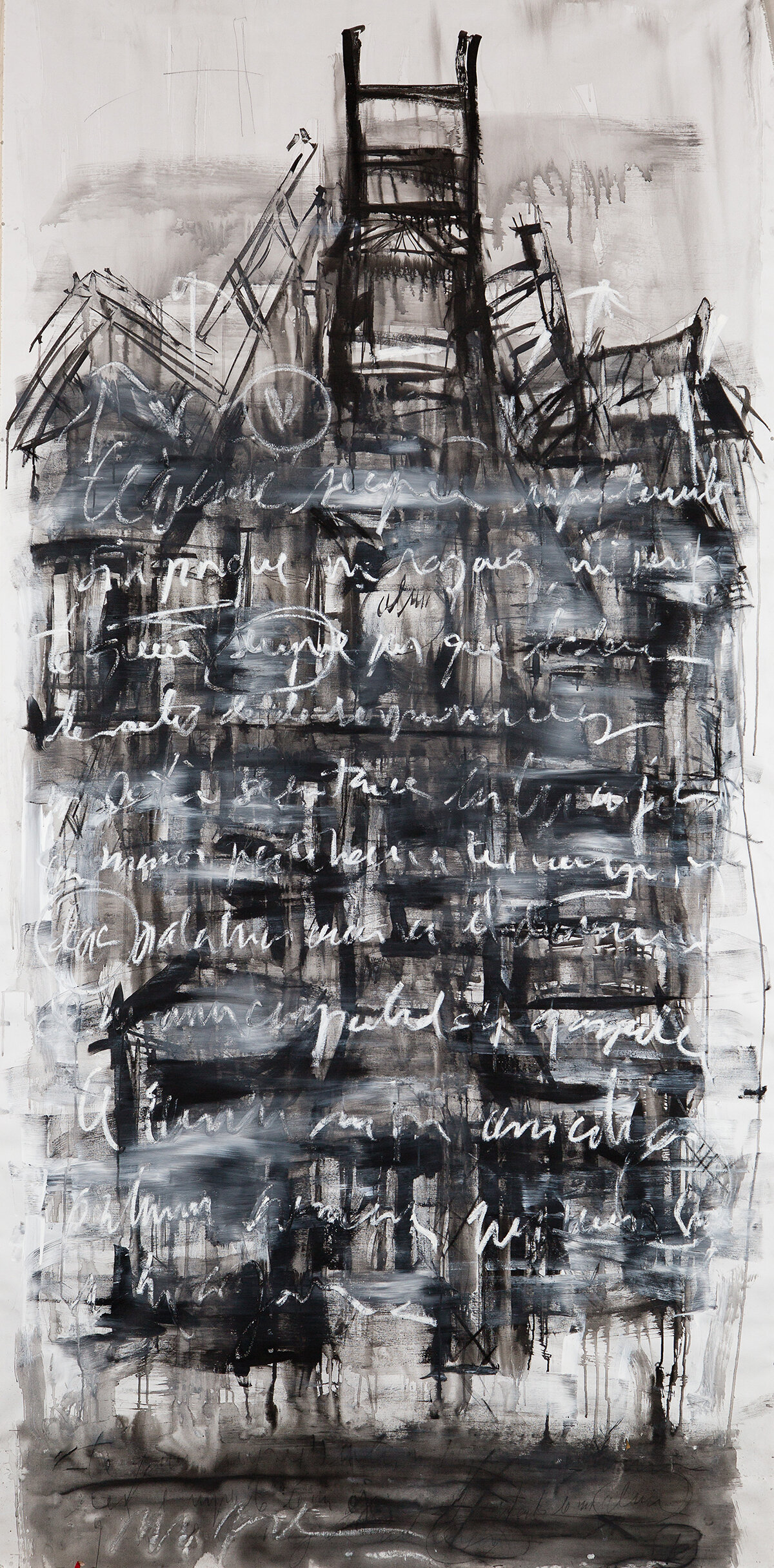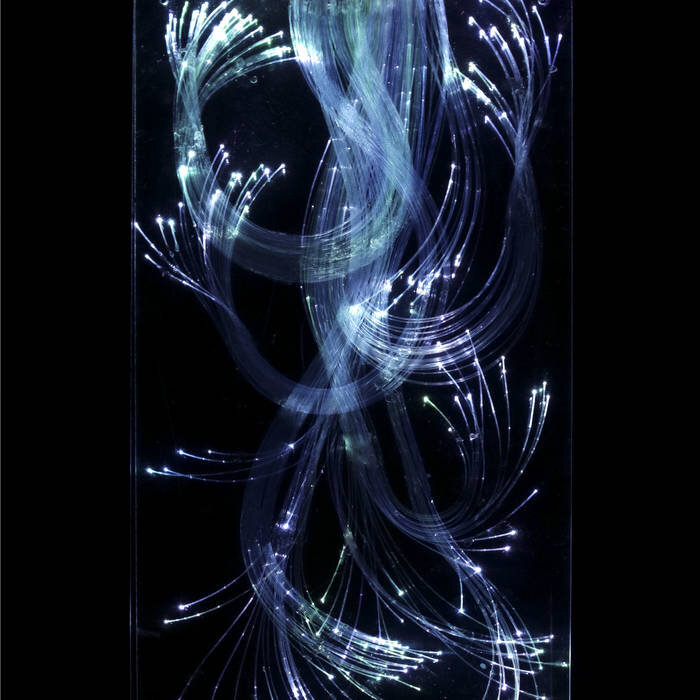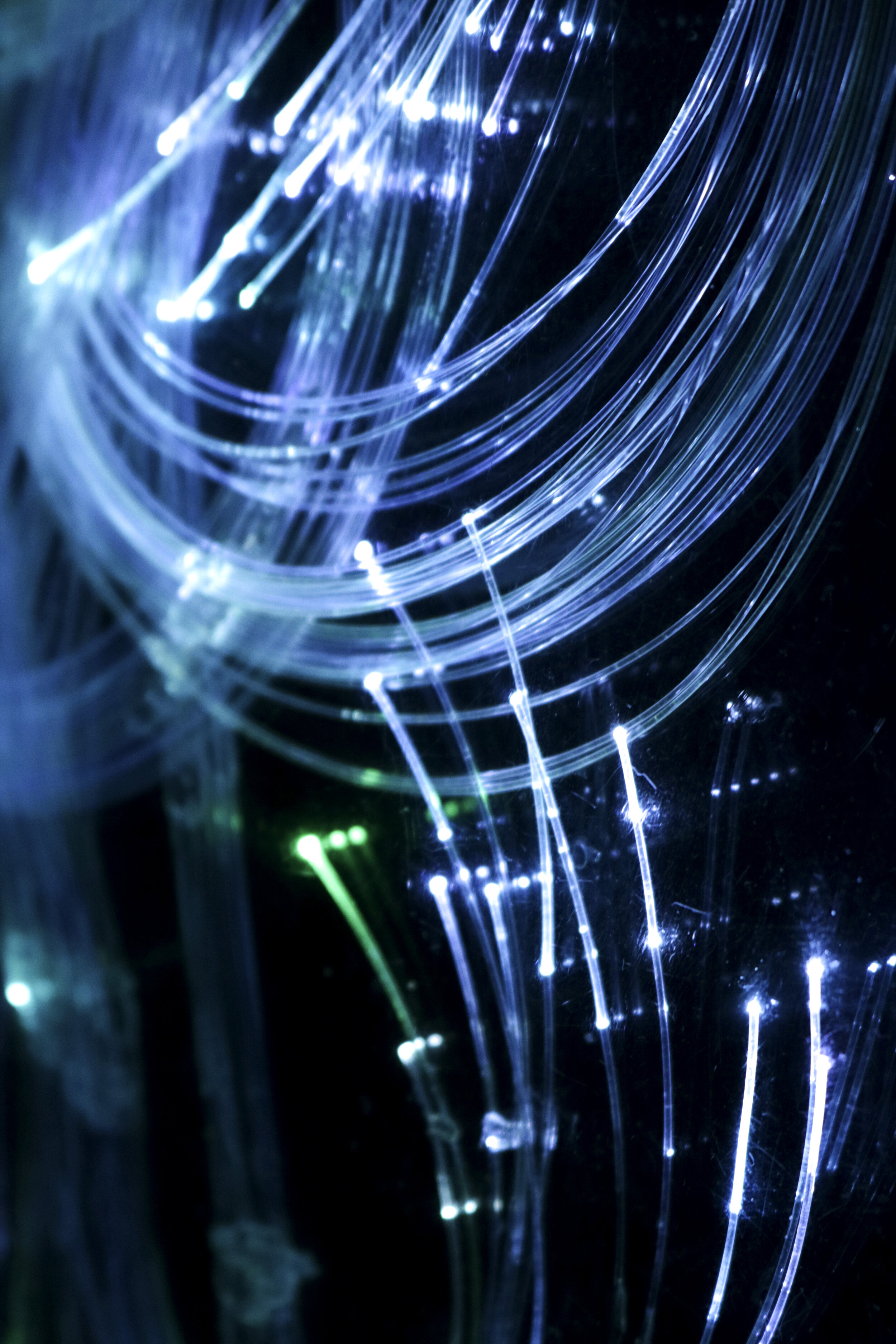Landscapes Collide
David Boskovich
By David Boskovich

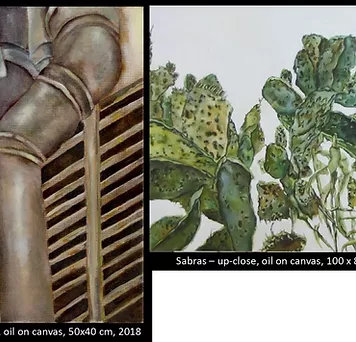
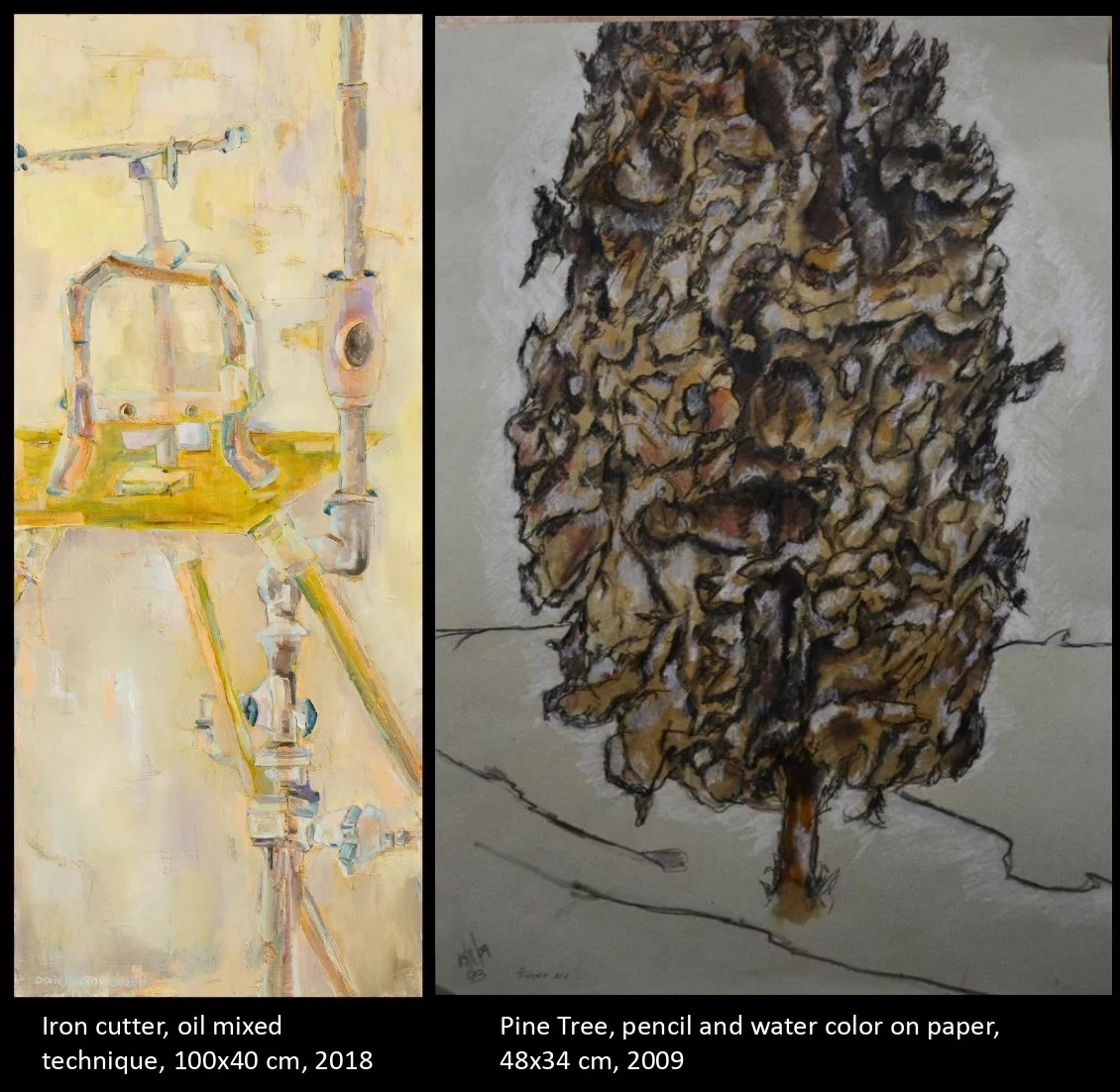


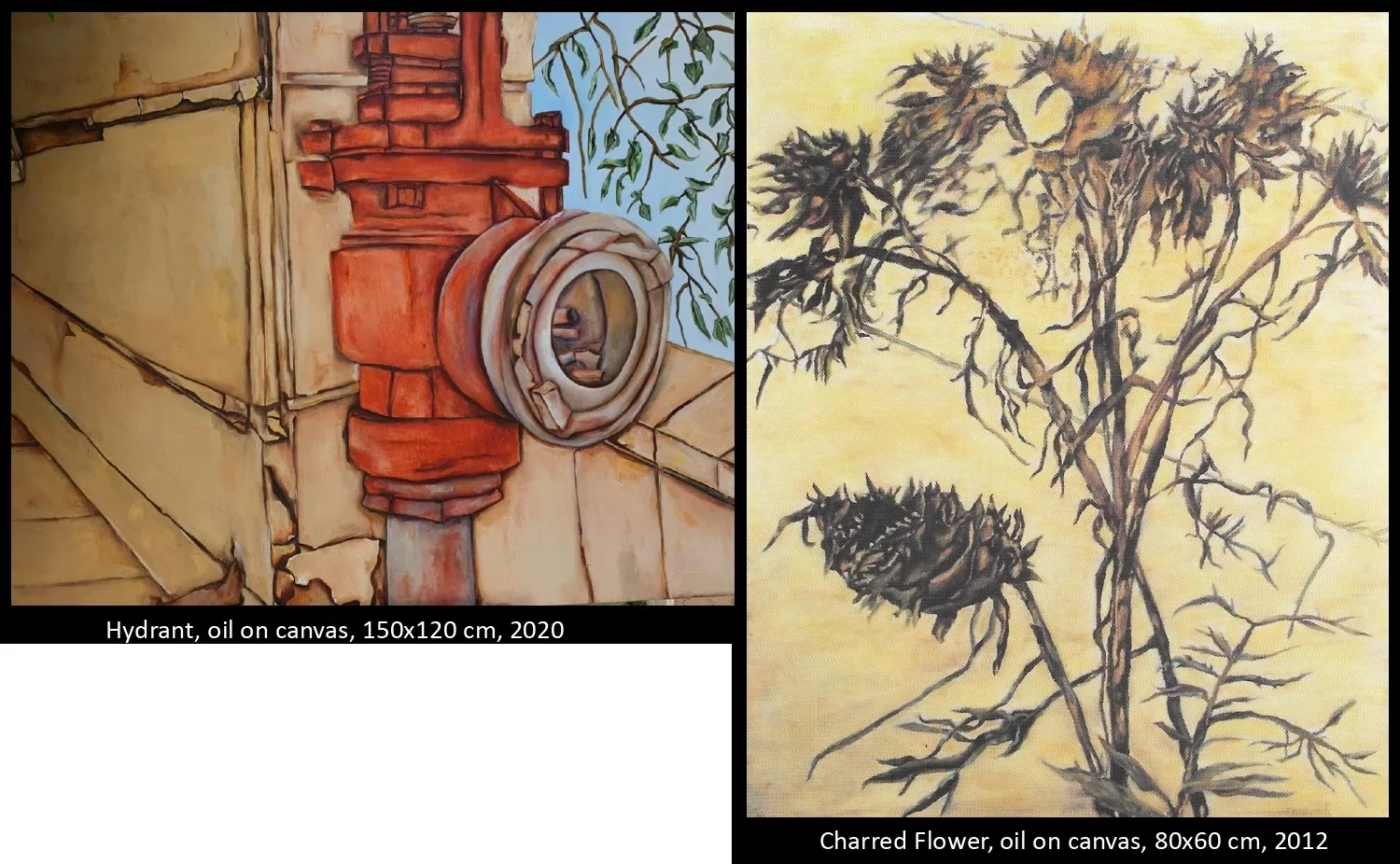
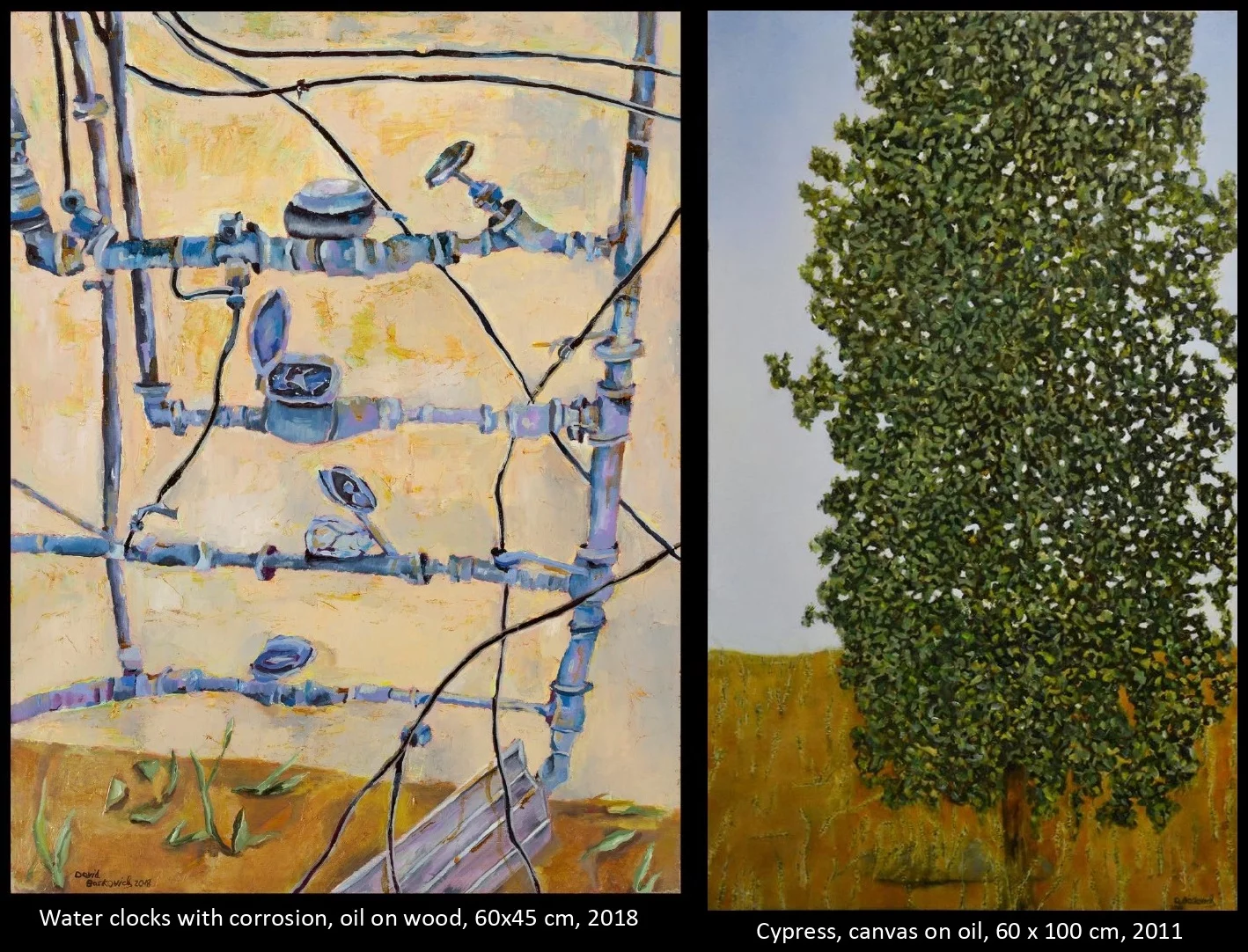
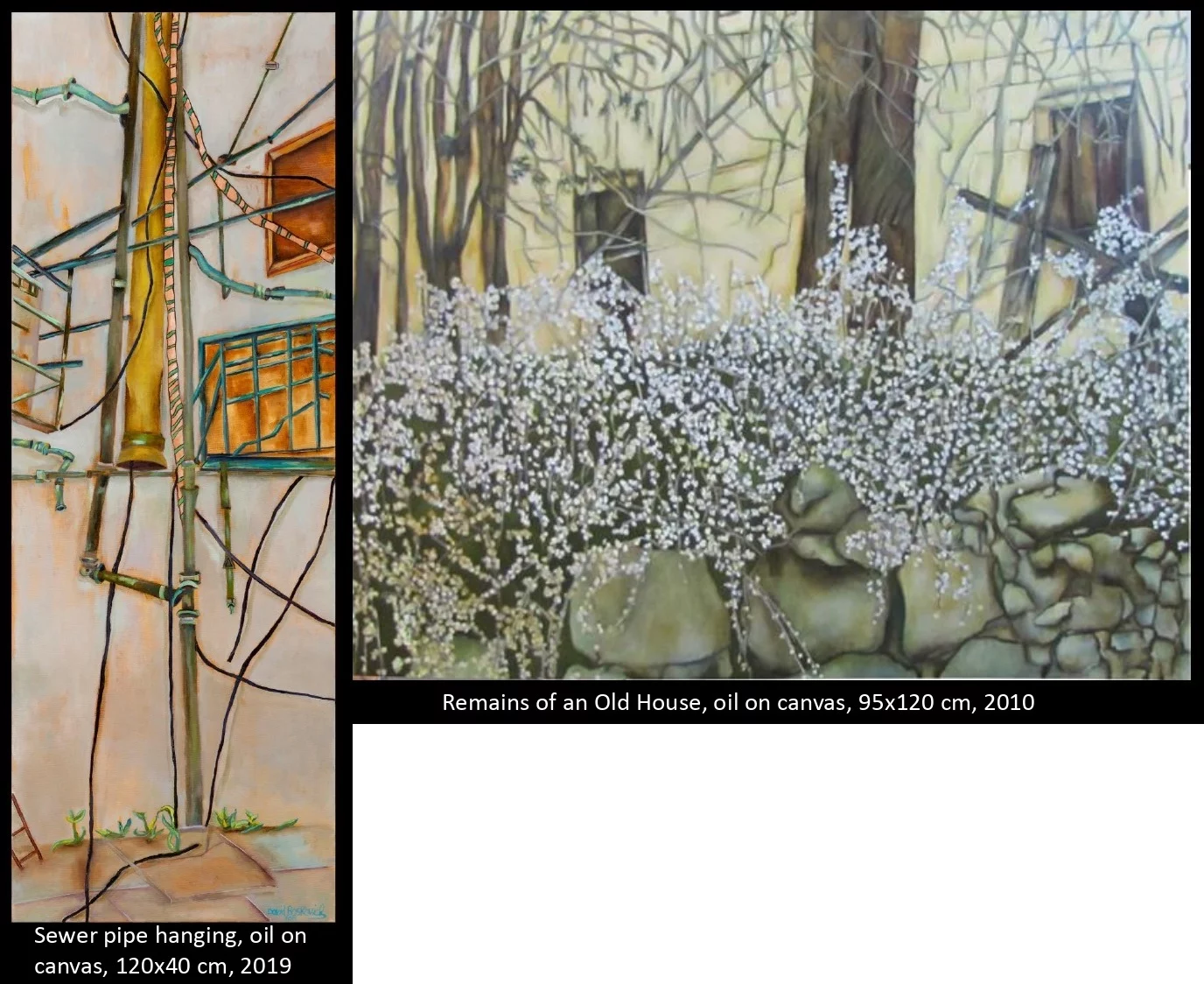

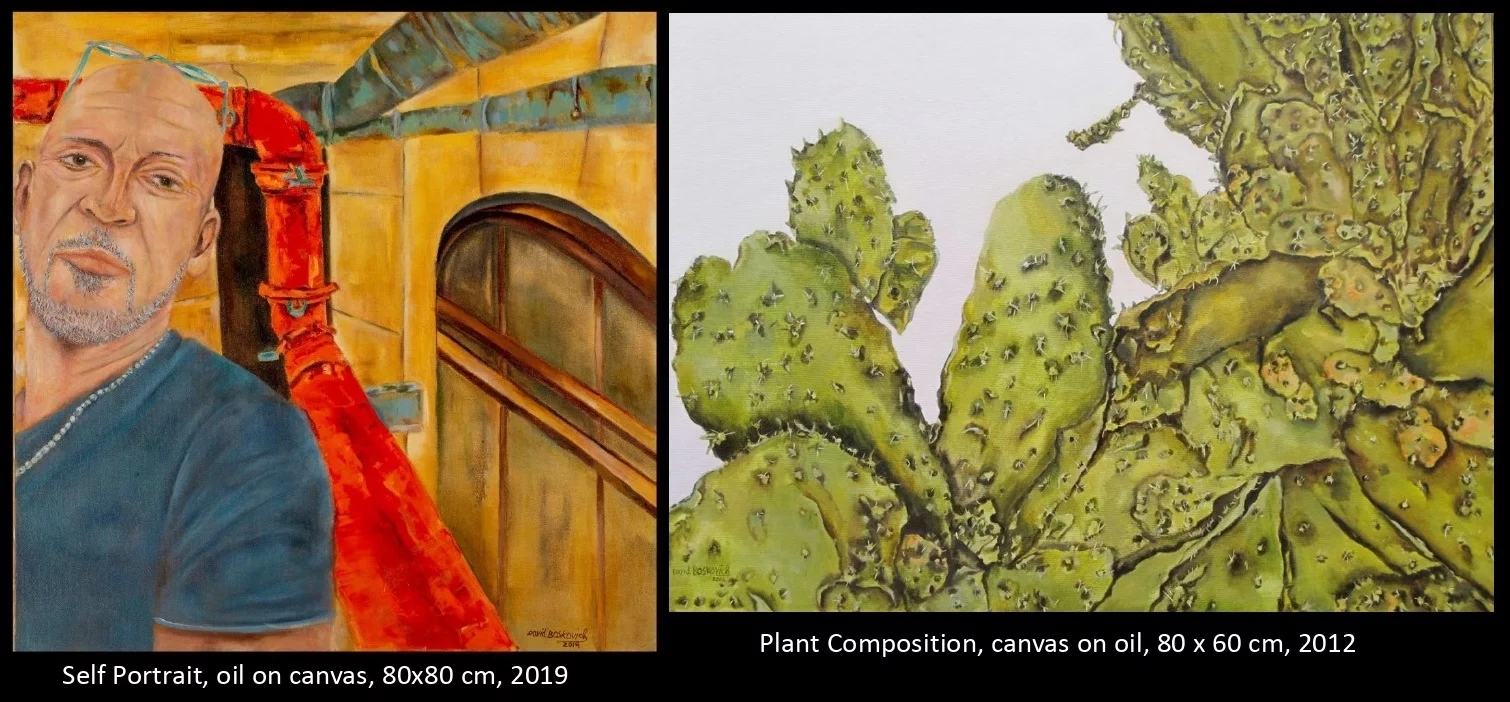
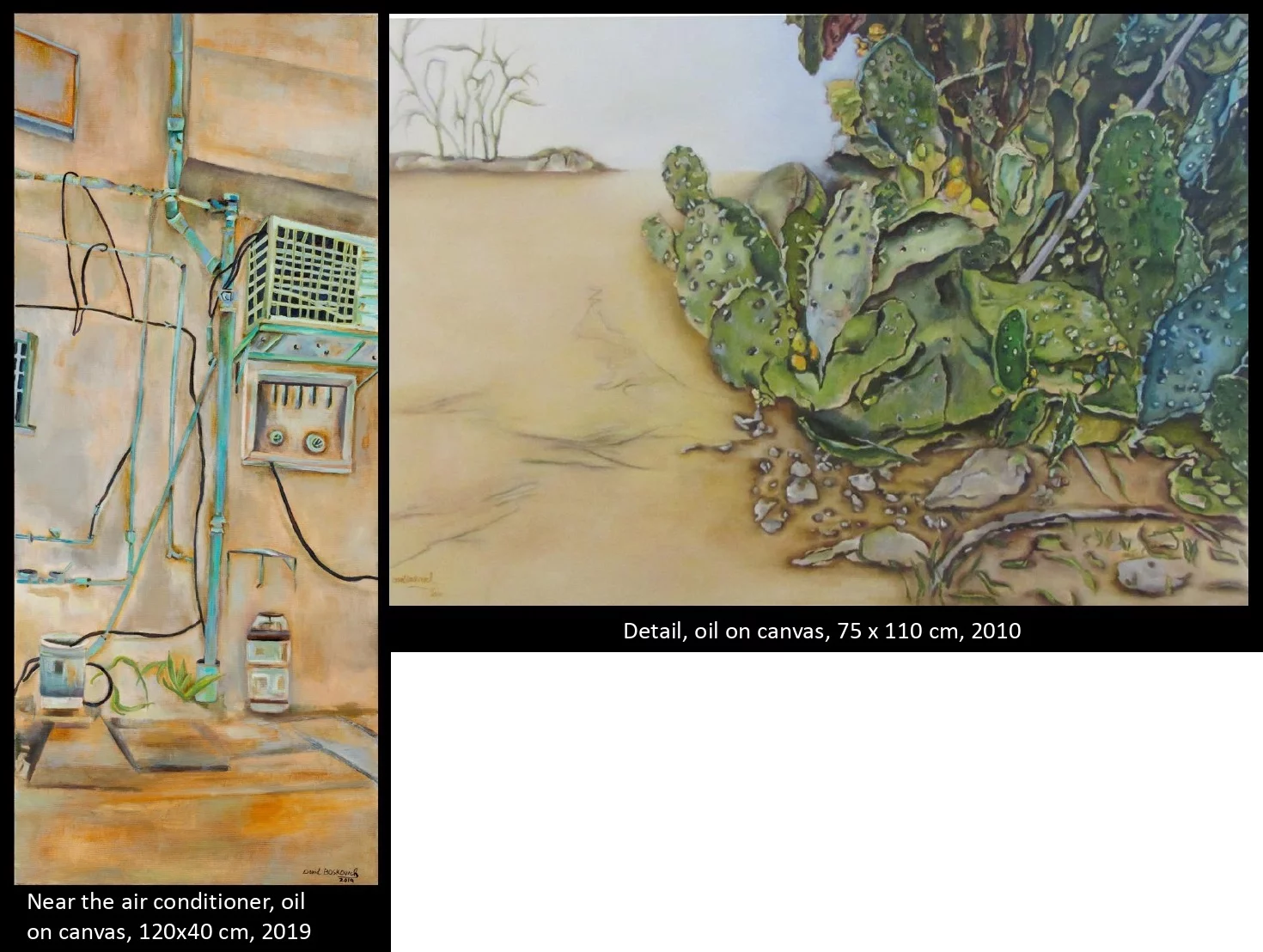
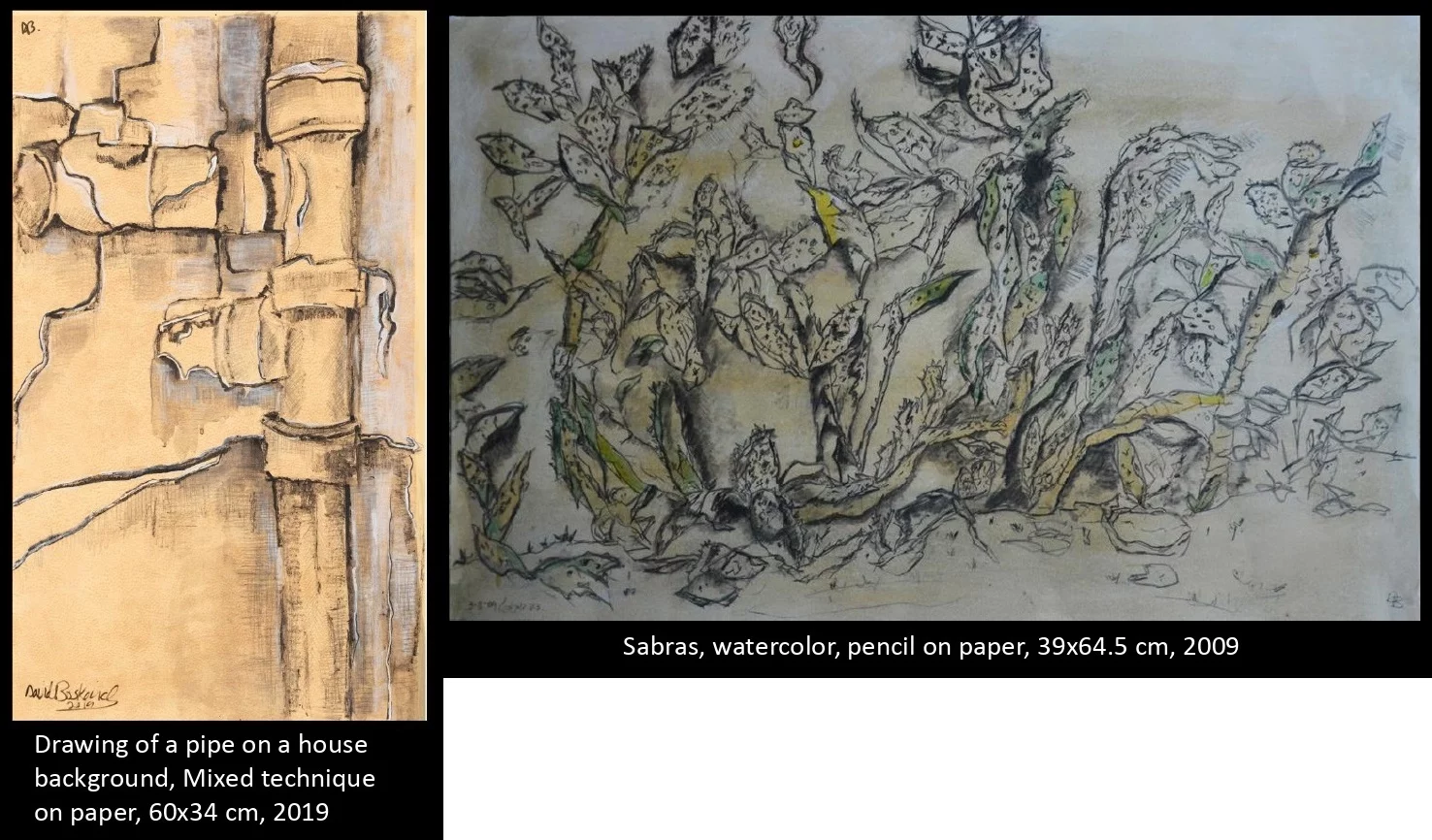
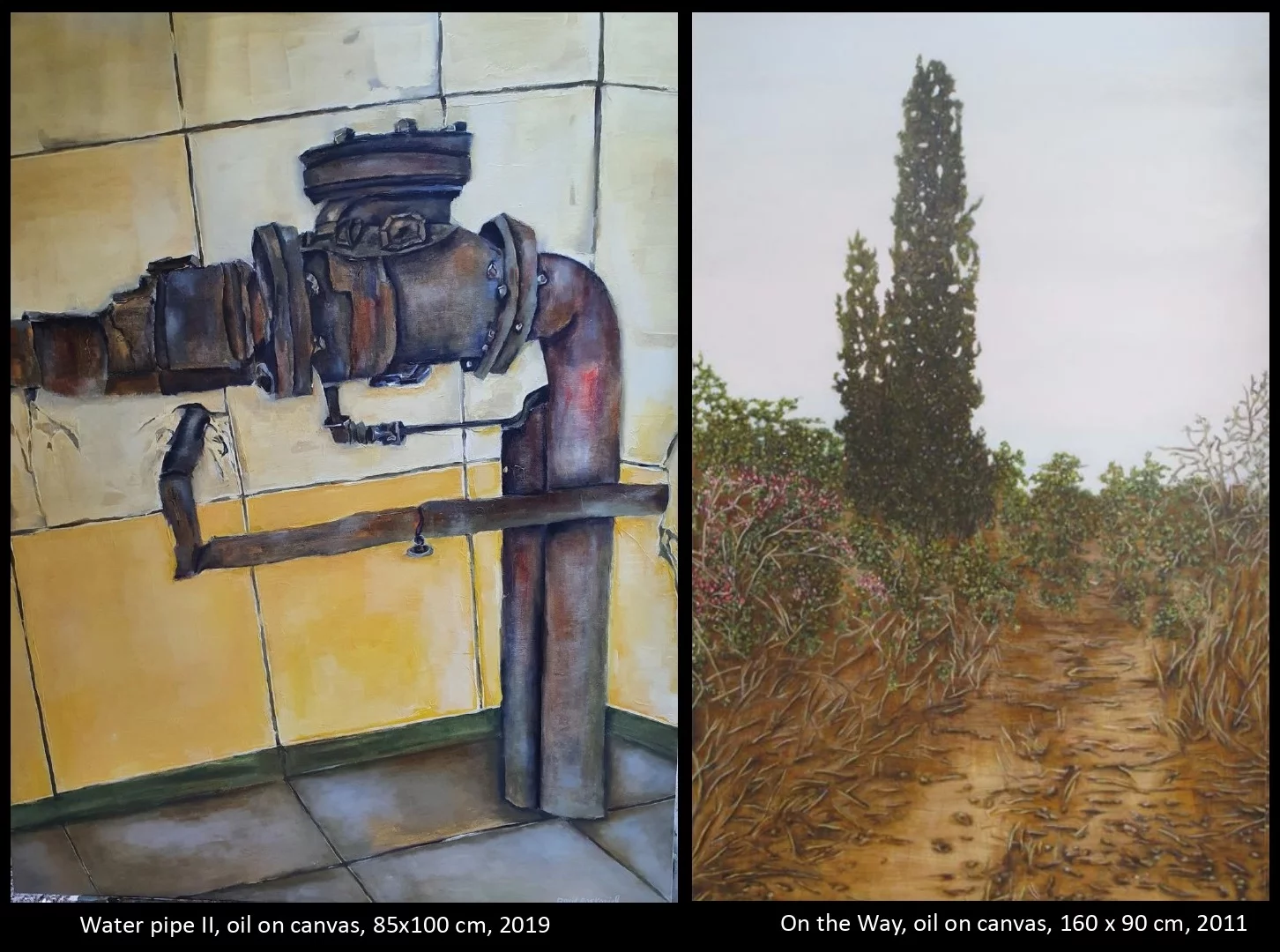
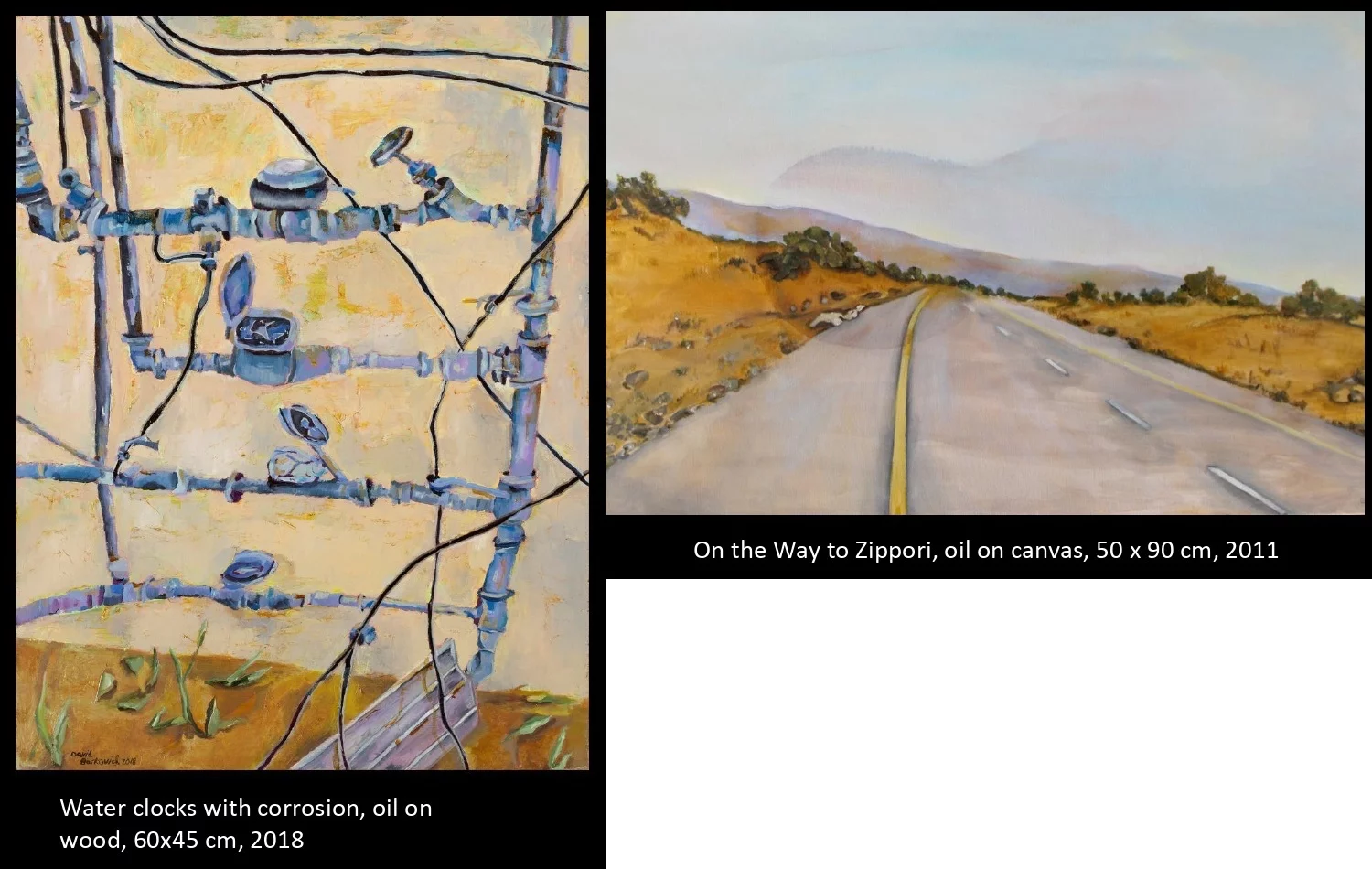

Humans turn landscapes and nature into cities and roads and leave our mark on the world. But this mark can be easily erased because when we neglect the structures we have constructed, nature works quickly to reclaim that which belonged to it. Most often when people think of nature they think of places that are free and isolated. "Nature" is often considered something that exists far from cities. But in Israel, the line between nature and urbanization is blurred. In our Israeli landscape, throughout Tel Aviv in particular, exists a unique nature, it blends in and blooms through pipes, on the buildings, out of the rust, between the distorted layers of neglect, wear, and corrosion common throughout the cities in this country, life emerges, bright and vivid. As someone who grew up in Israel, saw this disintegration and found it beautiful, I see in urban chaos both aesthetics and a catalyst. The combination of my two series illustrates this vision. "Pipes" - which focuses on the processes of retraction and disintegration created in the material. The process slowly degrades and crumbles the pipes and the various metal structures that surround us, giving them a new color and at the same time also peeling and exposing them. The retreat of the layers of matter allows its hidden layers to rise to the surface and be revealed to the observer as a distortion of matter and form. However, this process is reflected in new textures, contours, patterns, and colors as if they were a distorted mirror image of familiar material reality. The material retreat processes of pipes and structures in Tel Aviv that I have processed into reality on another level that enables magical realism. I found in the process of retraction of the pipes an aesthetic element that attracted me to build different compositions with the same shapes. When I looked at the pipes, the electrical wires, the chains that were a kind of visual chaos, and yet they created a certain rhythm for my visual imagination, which helped me to refine and reconnect the same compositions. The rhythm and movement created by the retreat and peeling processes in the structures and pipes I painted gave them momentum of life along with an organic vibe in bright colors. And "Zippori" - which focuses on the unrestrained, noble, free nature: spaces adjacent to the horizon where heaven and earth meet; Local landscape; An island of serenity that envelops me in peace; A sense of time-stopping in a bustling world, full of anxiety, hatred, and destruction; A diverse landscape of cypresses and thorny arms of Sabra, extending over the countryside of wavy hills. Nature opens the gates to the imaginative world of the wondrous and disconnects you from reality. While looking at and absorbing nature in all its details, a sensory experience that evoked associations built a world rich in creativity. The power of imagination moved me to the world of the magical and created a reality of multifaceted layers in which the object is in a constant process of variations. This state of emotion is the motivation, the urge for creativity, for paraphrases on the subject, while constantly searching for the construction of the pictorial balance between the miraculous world of imagination and the experience of reality.
About the Artist
David Boskovich
I was born in Tel Aviv to a musician couple, Alexander Uriah Boskovich, a senior composer of Israeli classical music, an educator and music critic, and Miriam Boskovich, a pianist and piano teacher at the Samuel Rubin Israel Academy of Music, Tel Aviv University. In 1976 I went to the United States to continue my painting studies at the Pennsylvania Academy of the Fine Arts in Philadelphia. In 1990, I was invited by Master Ernst Fuchs, one of the forerunners of Fantastic Realism, to work with him and serve as his assistant in Monte Carlo and Vienna. During my stay at Fuchs's studio in the south of France, I studied classical painting techniques used by the Flemish masters. In 1993, I returned to Israel with my family, and since then I have been teaching painting, and concurrently working with brain injury patients via art.
the reason/ the object/ the word
iliana emilia garcía
By iliana emilia garcía
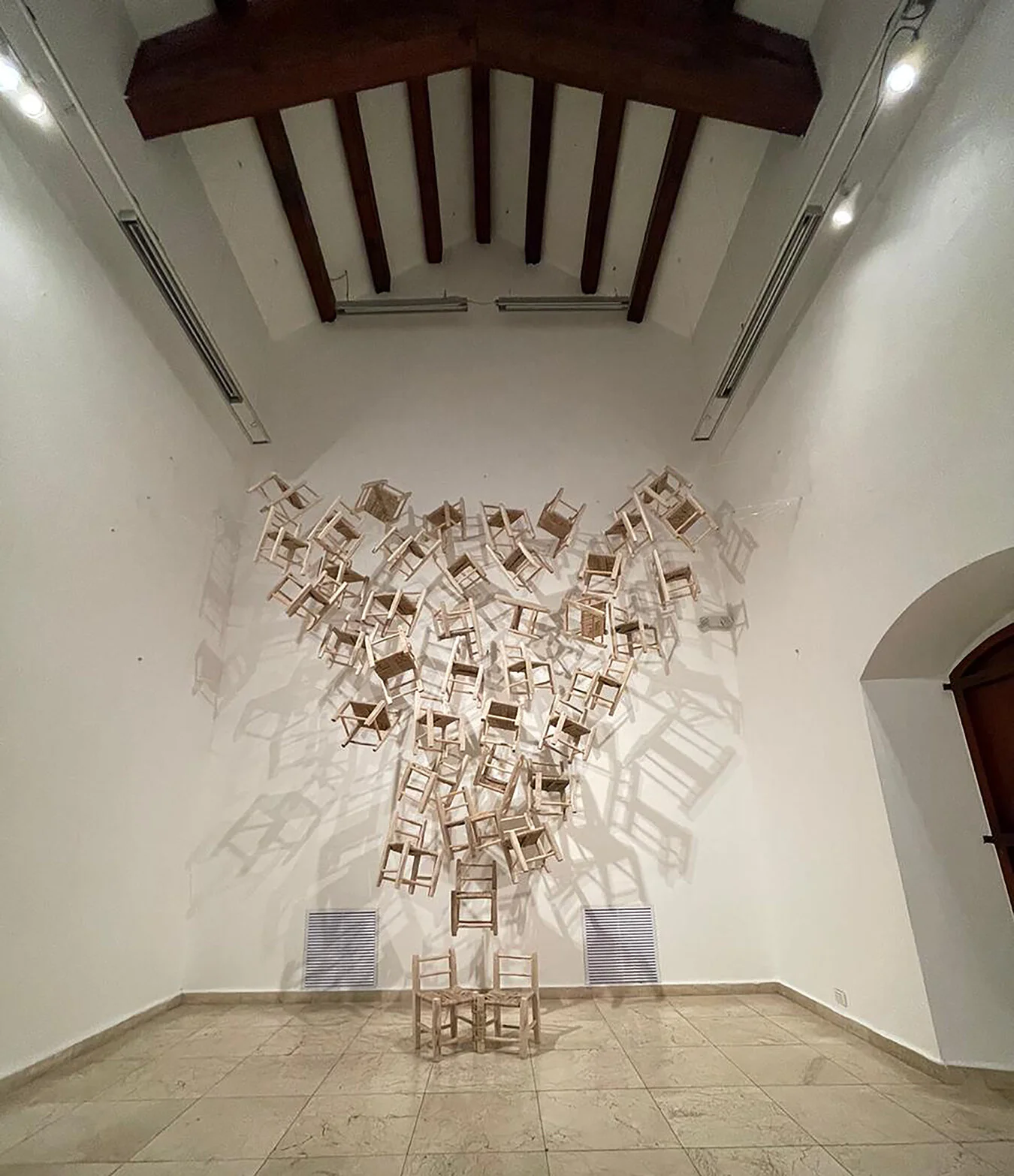
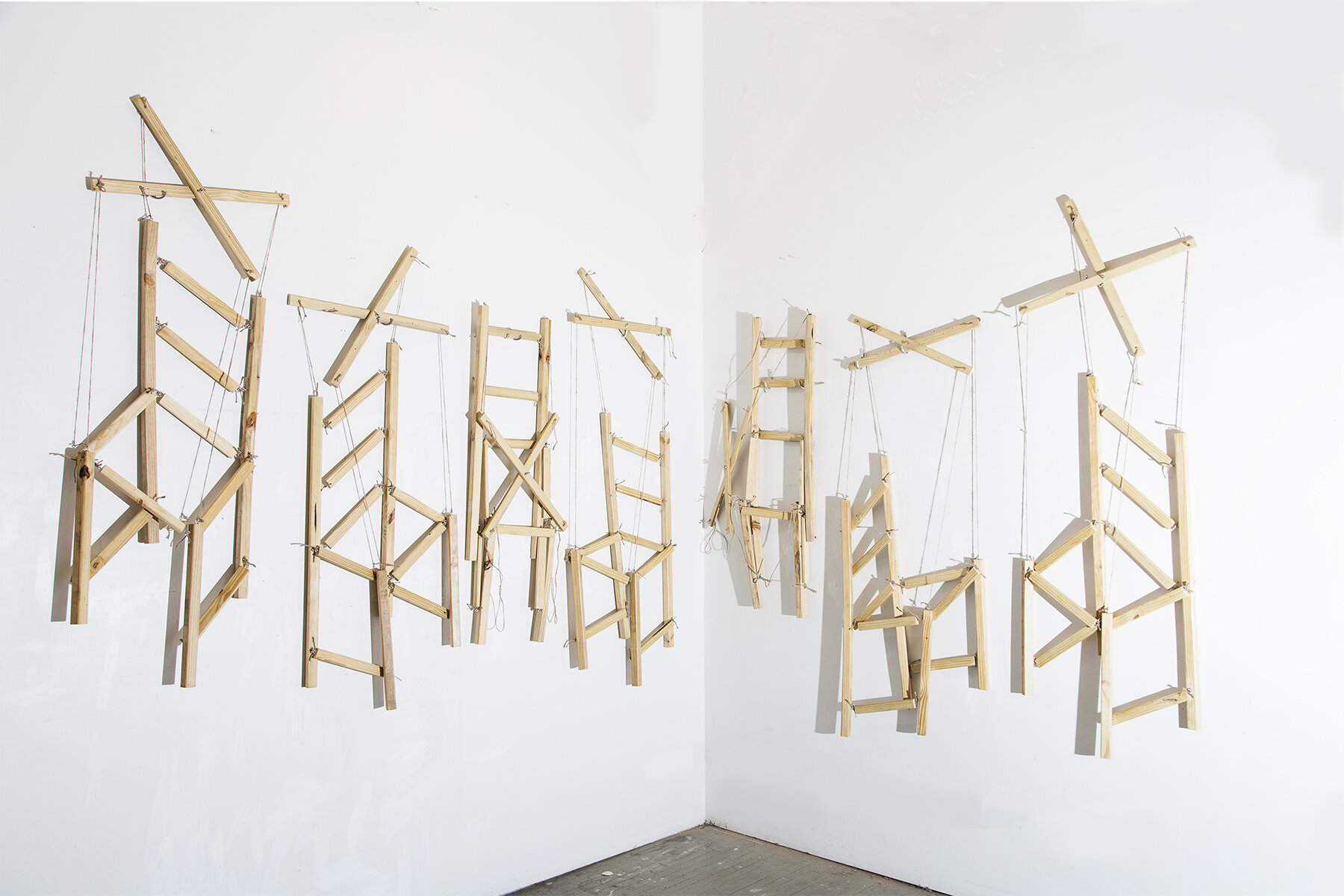

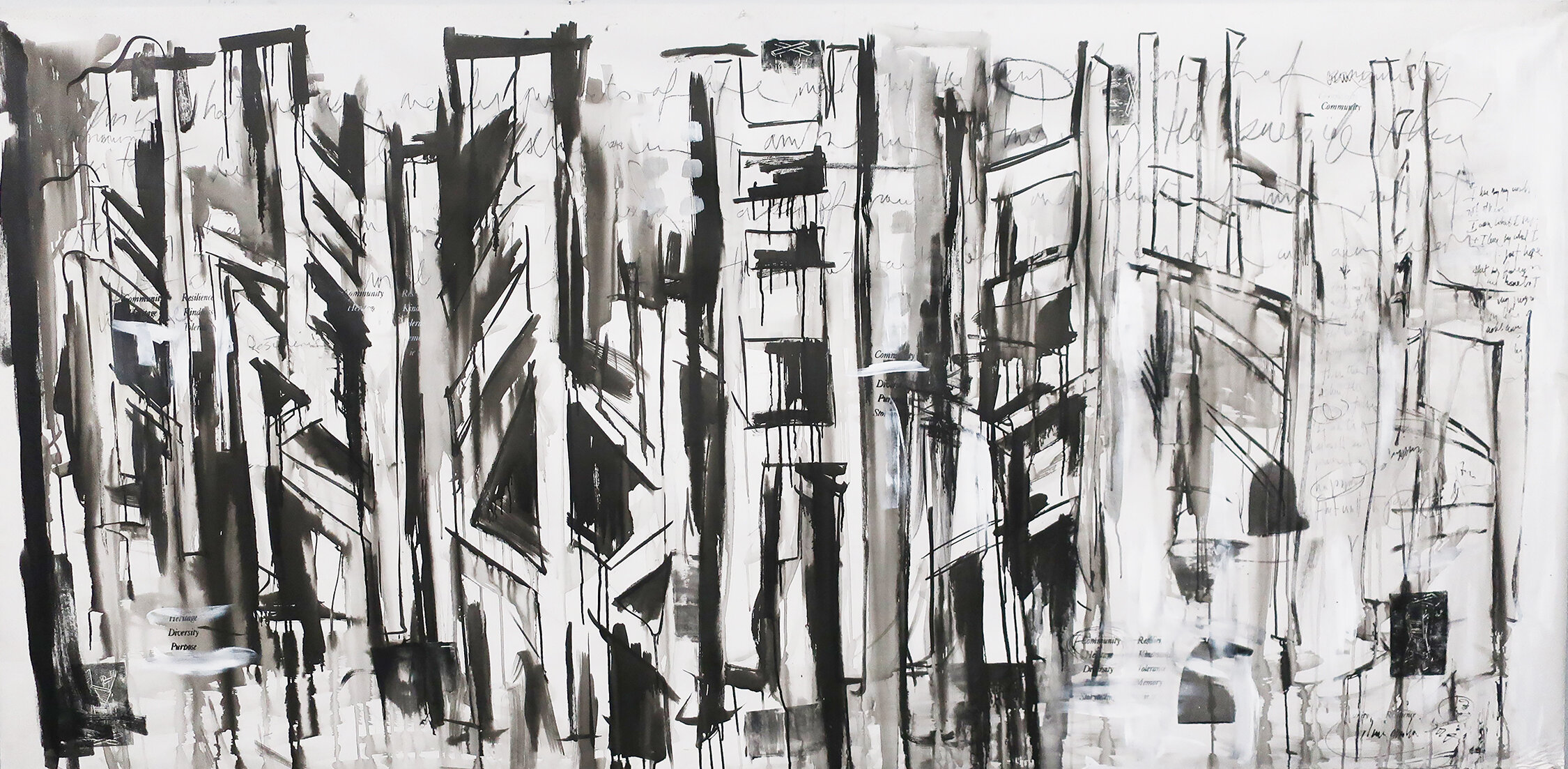
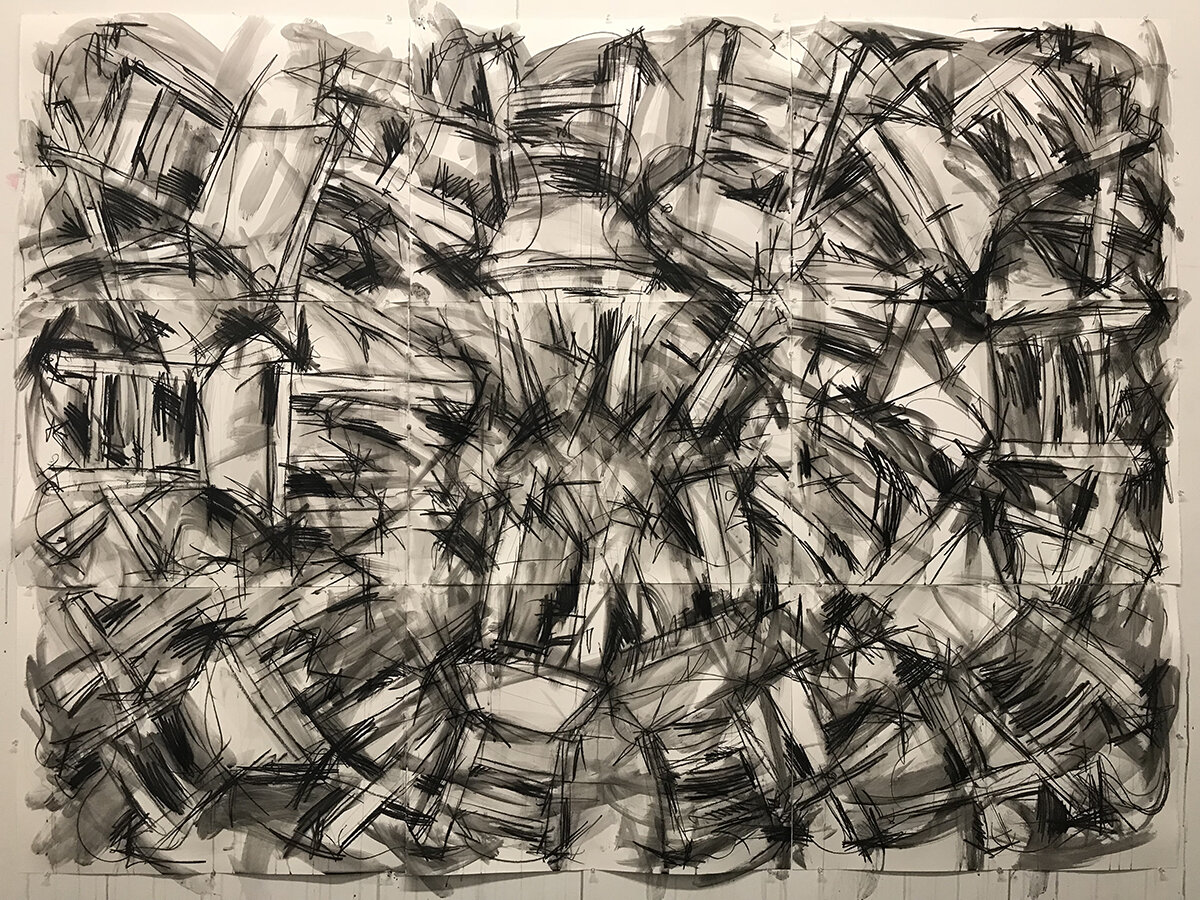
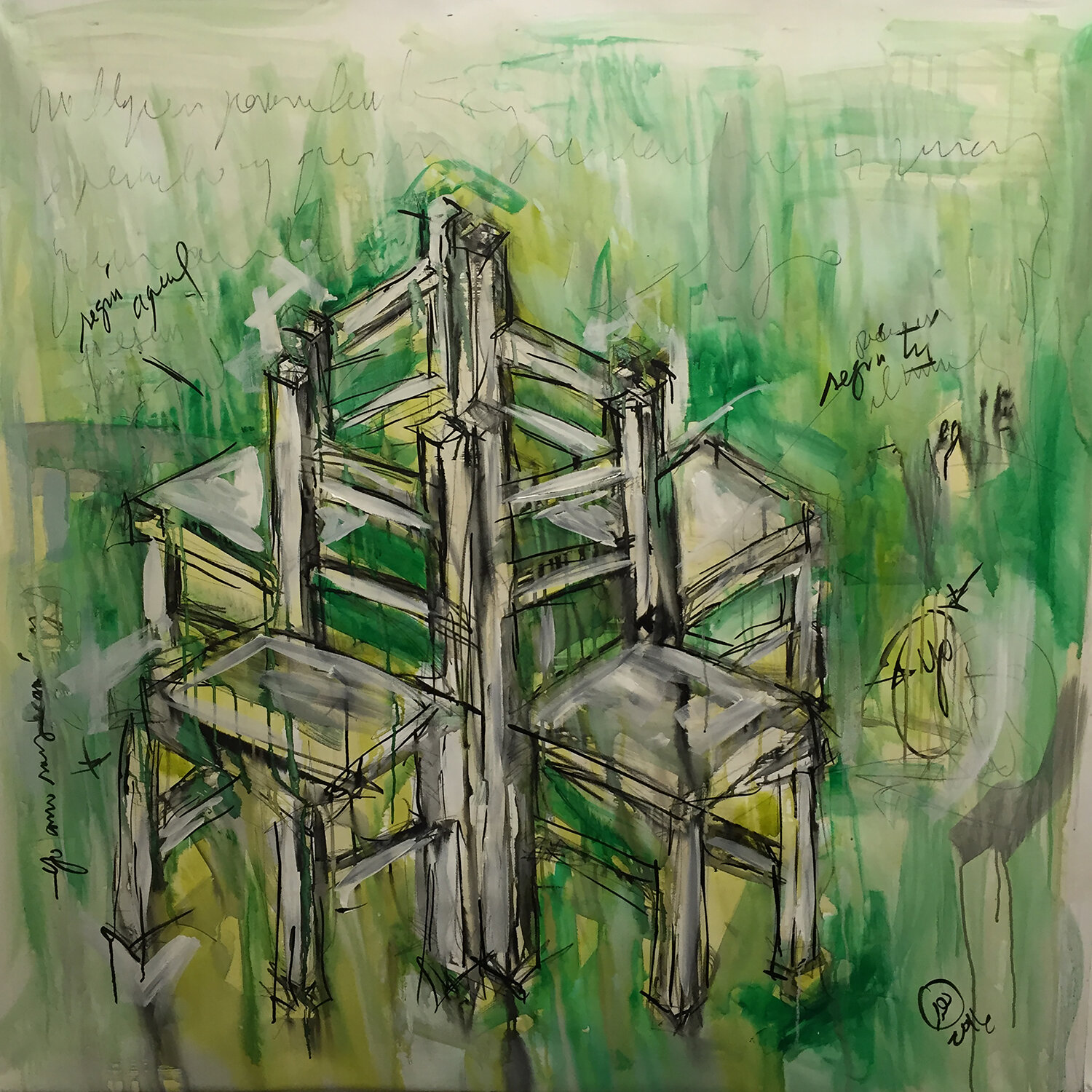
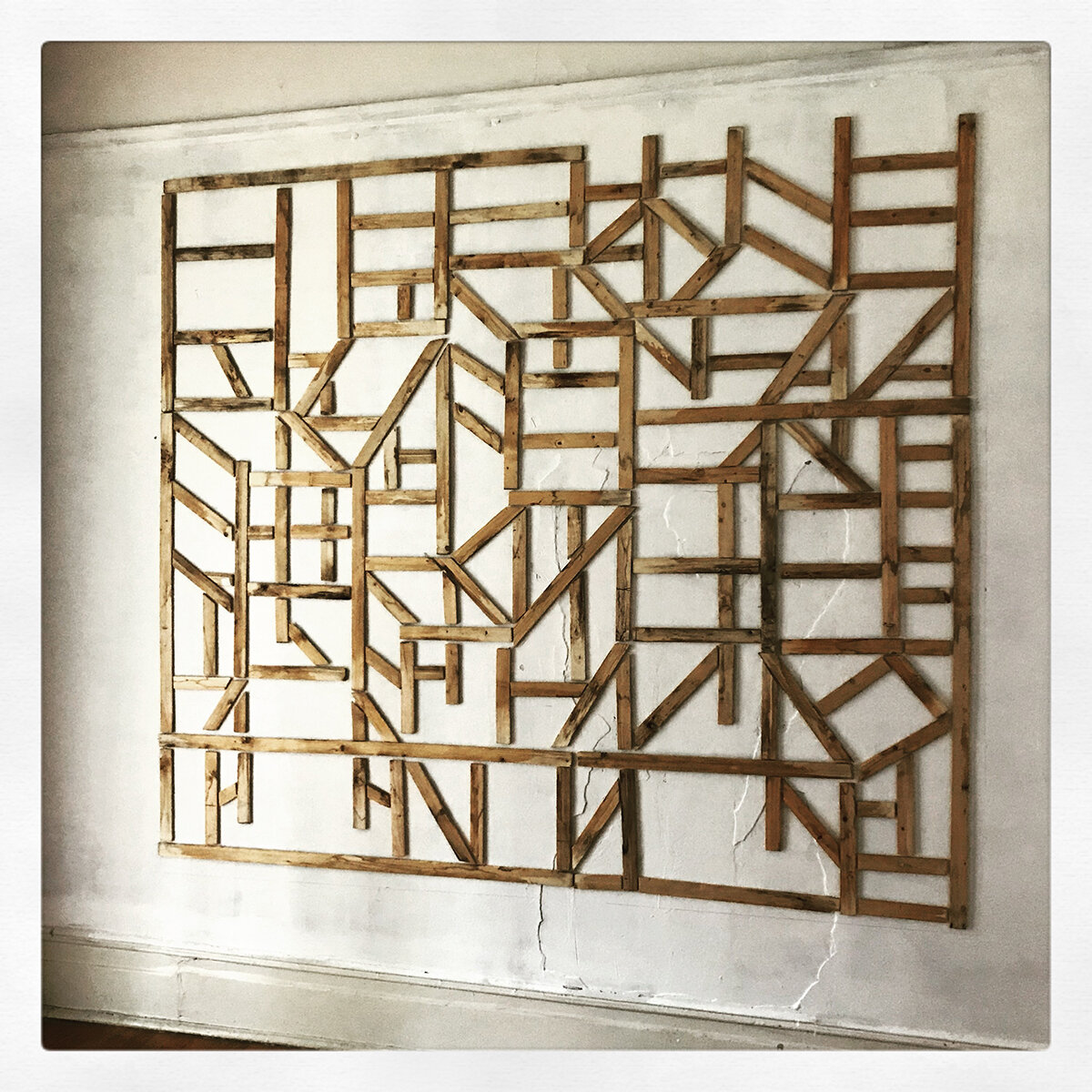

The base of my work is the emotional history of things. It's not about the geographical or physical history, but more about the value we give to what we own/keep/cherish from the landscapes/places we come from and that we keep with us through crossroads. Those symbols that seem to breed from the memory of our heritage. I have been using the chair as my personal tool/star/instrument related to tradition and visual history; and one of the most public of signs, the heart, as the symbol to represent the intimate side of a communal activity as it is to feel, to remember and to interpret. I intend these icons to tell the history and remember it, precisely our basic need for emotional comfort and our sense of loss and gain. It is a constant search, not of answers, but certain satisfaction, and of an alleged reason of tradition when we believe in having one through the repetitions of patterns, which lead us to an apparently safe and happy history. This is also a search for physical perpetuity, without counting with just our memories (and the subjective fact attached to that concept). For the strength, the material I choose to apply may suggest, compared to our emotions' vulnerability. History, especially the heart, tends to turn fantastic when held by dreaming souls and broken ones. Sometimes, even when it seems possible to express pain with tears and pleasures through smiles, they do not guarantee the true interpretation of the feelings (if that would be possible) or the strength/weakness of emotions (those of first loves). My chair has become the permanent tree where we could always lean, and the heart, the caretaker (if the tree falls) of finding our innocence, of making up for any loss of memory and bringing back a sense of gain, love, emotional accomplishment and presence. It may also bring sadness and regrets, but it is said that pain does not have memory or may sometimes be delayed by some basic human urge to find beauty first. At the end (and from the beginning), everything depends on the "eye/heart of the beholder."
About the Artist
iliana emilia garcia
Involved in the arts since an early age under the teachings of Nidia Serra, a well known Dominican artist; her weekly visits to the Museum of Modern Art and her collections of posters, long plays, stamps, cans, books, wrappers, packages and anything that she found visually interesting.
She received her AAS from Altos de Chavon/The School of Design, affiliated with Parsons the New School of Design, in her native Dominican Republic in 1989. Received an scholarship to attend Parsons Summer Program in 1988 and later received her BFA in Communication Design from Parsons The School of Design in 1991, after being awarded the Ruth Vanderpool Parsons Institutional Scholarship for Portfolio Excellence.
While Garcia has been actively developing her art with mixed media, drawings, installations, video art, printmaking and big format paintings, also maintains a career in fashion graphics for companies like Guess Jeans, Gap, Rocawear, Calvin Klein Jeans, Tommy Hilfiger, and others. In the early 2000’s, she founded her own graphic company, VOX Publicus which is an “on-going” collaboration with her fine arts practice.
iliana emilia garcia works in big format drawings on canvas and paper, escalating installations, printmaking and digital photos on canvas depicting her most iconic symbol: the chair.
The base of her work is the emotional history of everyday things. It’s not about the geographical or physical history, but about the value we give to what we keep from the landscapes we come from; and that we unconsciously keep with us through crossroads. The symbols that seem to breed from the memory of our heritage.
Garcia has been using the chair as her personal instrument related to tradition and visual history; and one of the most public of signs, the heart, as the symbol to represent the intimate side of a communal activity as it is to feel and to interpret. She intends these icons to tell history and to remember it; precisely our basic need of emotional comfort, and our sense of loss and gain.
Her work has been writing about in numerous art publications and catalogues, and exhibited at BRIC, Brooklyn, NY; Exit Art, NY; No Longer Empty at Sugar Hill, NY; The Smithsonian Museum of American Art, Washington, DC; El Museo del Barrio, NY; Aljira Center of Contemporary Art, Newark, NJ; Leonora Vega Gallery,NY; Howard Scott Gallery, NY; NOMAA, NY; Joan Guaita, Spain; the 3rd Triennial Poli-Grafica, San Juan, Puerto Rico; Barnard College, NY; Museo de Arte Moderno de El Salvador; Belgium and many other venues. Her work is part of the Smithsonian Museum of American Art collection, El Museo del Barrio’s collection, the Museo de Arte Moderno of Dominican Republic and several private collections.
She is also a founding member of the Dominican York Proyecto Grafica (DYPG), a printmaking collective
Garcia currently lives and works in Brooklyn, NY.
Ani2Dance (Collage30)
Luis Carlos Rodríguez
By Luis Carlos Rodríguez
Ani Dance (collage30) is a collage from the ani series, and is part of a broad experimental audiovisual research project that tries to explore formal, structural, narrative and aesthetic issues from the point of view of artistic-expressive activity. For this purpose, we intervened and construcedt variations, spatial and temporal, of mythical scenes from the cinema that have passed through the public domain. We modified its previous meanings, and in the process amplifying or varying its narrative value and its audiovisual aspect.
About the Artist
Luis Carlos Rodríguez
I reside in Valladolid, University of the Basque Country. I am currently a professor at the Faculty of Education, University of Valladolid.
I have several individual and collective exhibitions of painting, photography, video art, installations and audiovisual performances across the world.
The Owls
Yorit Rozin
Over hundreds of years the owls have been witnessing the disappearance of the trees. They could do nothing to stop it. Now when the forest came back the owls are happier. For the past 18 years Sadhana Forest has been trying to restore the indigenous ecosystem of coastal southeast India, meanwhile establishing an eco-friendly volunteer community. Come and volunteer with us and be part of our reforestation work!
About the Artist
Yorit Rozin
My name is Yorit, I am a writer, artist and co-founder of Sadhana Forest, a reforestation water conservation project in Auroville, since 2003. In 2002 together with my husband and my daughter we moved to India. We followed our hearts until destiny brought us to this empty piece of land in Auroville, where we opened our house and our hearts to volunteers from all over the world to live with us and grow along with the forest.
Compassion
Yorit Rozin
For the past 18 years we have been trying to turn compassion into our lived reality. This is our goal in Sadhana Forest. We try to create a way of life that is in harmony with humans, animals and nature. Come visit us and experience it yourself!
About the Artist
Yorit Rozin
My name is Yorit, I am a writer, artist and co-founder of Sadhana Forest, a reforestation water conservation project in Auroville, since 2003. In 2002 together with my husband and my daughter we moved to India. We followed our hearts until destiny brought us to this empty piece of land in Auroville, where we opened our house and our hearts to volunteers from all over the world to live with us and grow along with the forest.
Conversations for Human and A.I.
Samuel Long
By Samuel Long
Covid-19 has created a shift in how and where people work and how they manage time. The transition for many of in-person work to working from home, has revealed how productive people can be in their own environment. It has also allowed more time for loved ones, creativity, and reflection. It’s a paradigm shift which will likely continue when the virus abates. The rapid development of artificial intelligence allows for even more free time, energy and creativity. This will fuel a seismic shift in priorities, from acquisition to humanism, confusion to clarity and selfism to altruism. And that’s what this composition emulates and illustrates. “Conversations for Human and A.I.” is an electronic duet between composer Samuel Long (also known by the artist name, Lapis Elle) and his artificial intelligence system affectionately called “Thing.” The composer built a mutli-function artificial intelligence system which creates chord structures in response to melodic performances on modular synthesizers. The system itself is inspired by Pando, a colony of thousands of quaking aspen trees in Utah that looks like a forest, but is actually a singular organism. “Thing” will be used for multiple projects and collaborations, and as a result, will constantly grow and evolve as our society grows and evolves as a result of these extraordinary times. In this piece “Thing” can be heard as all of the orchestral sounds, while the modular synth performance (by touch and hand gestures) are all electronic. This creates an important contradiction: the more familiar sounds are inhuman and sterile while the abstract and obtuse sounds are more personal and human.
About the Visual Art "I Spread"
Using optical fiber as a simulacra, this project seeks to make physical the connectedness of ideas. Everything is connected because everything can be connected. Drawing inspiration from the rhizomatic Pando tree organism, the flexible destination of light represents the propagation of information in an ecosystem. This system relies on chance and resists organization, creating intervals in ways that she is unable to control.
About the Artists
Composer: Samuel Long
Samuel Long is a composer, whose work bridges the gap between experimental classical music and modern electronic composition. He graduated magna cum laude from the Music Conservatory at SUNY Purchase College, and his credits include works for the screen, stage and stand-alone albums. His compositions for the Youtube animator Meatcanyon have each been viewed over 2 million times.
Visual Artist: Rachel Azzinaro
Rachel Azzinaro is a graphic designer and artist currently living in Richmond, Virginia. She has a deep and multifaceted love for printmaking, history, science fiction, letterpress printing, ancient art, and theory. Her art practice combines a fascination in humanity’s natural and speculative impact on the world and on history. Rachel enjoys making work about its Aboutness.


